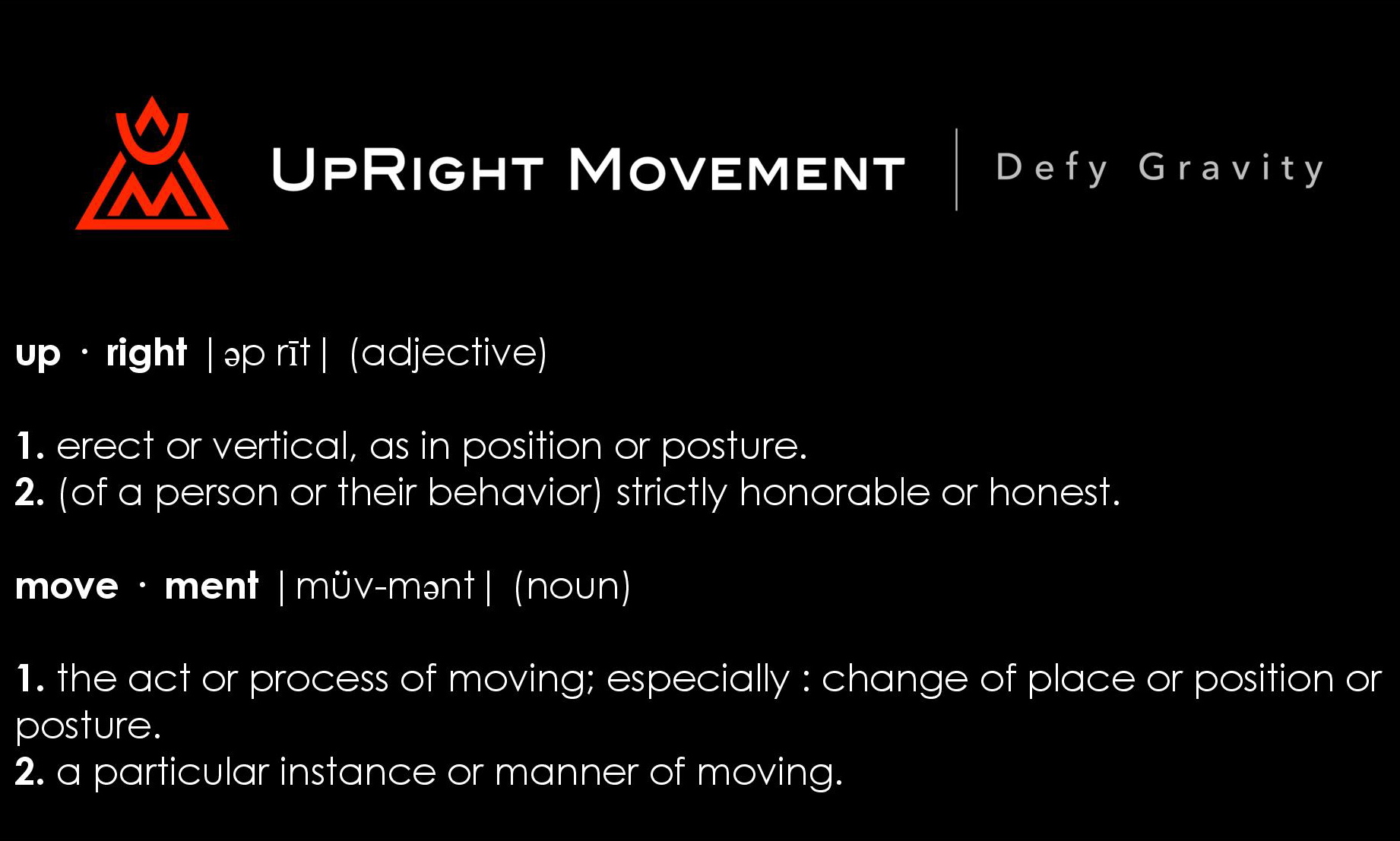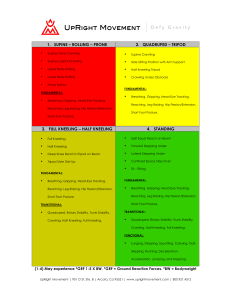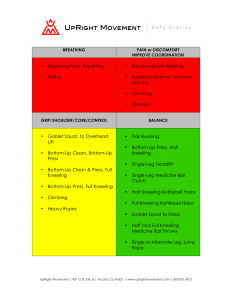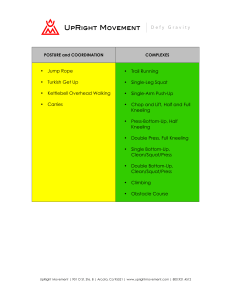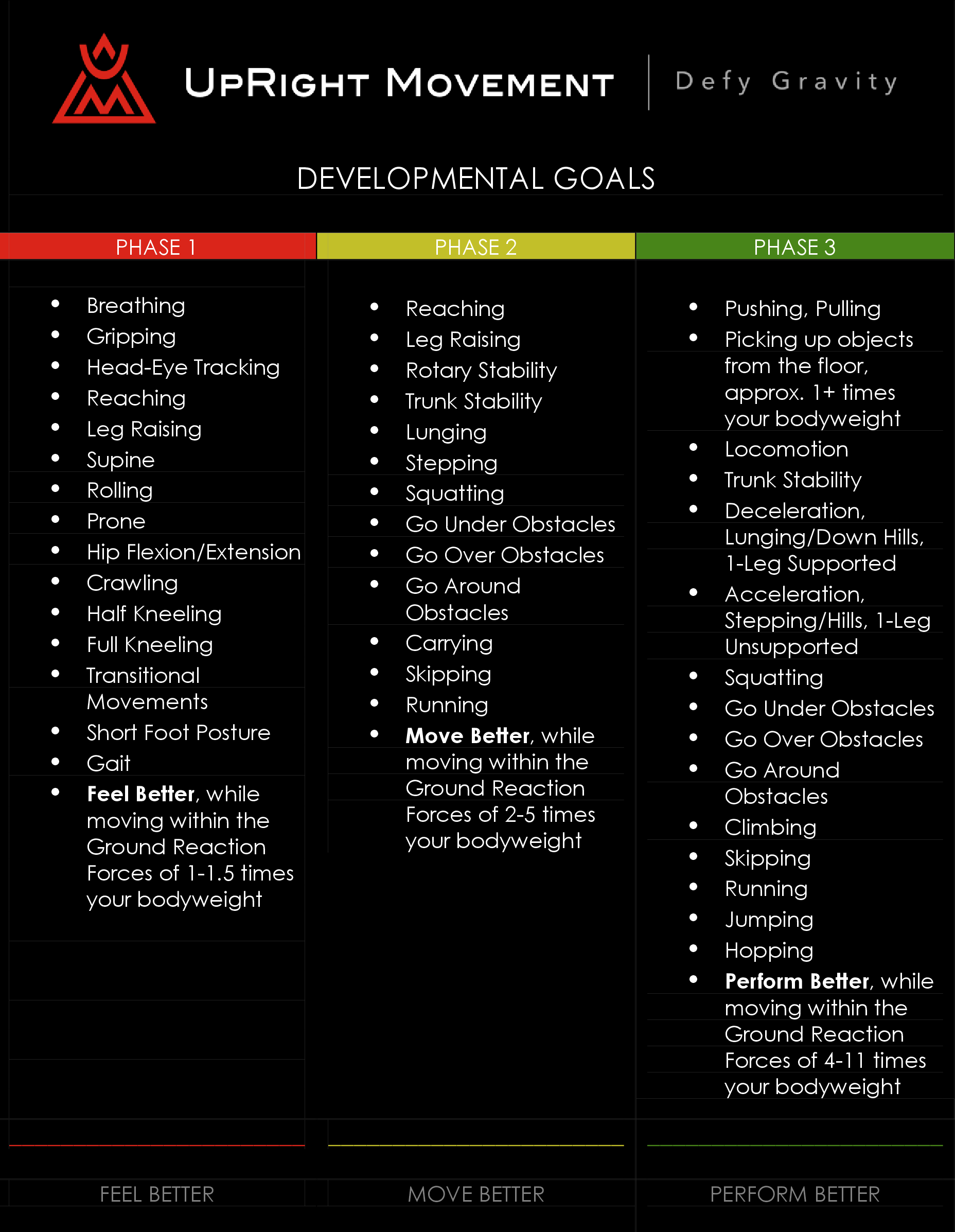“Finding WHY is a process of discovery, not invention.”
UpRight Movement is a Force Multiplier on a mission of helping to change peoples’ lives for the better through health and fitness.
To give you an idea of what you might experience when working with us, here’s a brief breakdown of our “Whys,” “Hows,” and “Whats.”
Philosophy:
1. Safety. Monitor technical proficiency, intensity, volume, and regeneration
2. Minimize Asymmetries and Reduce Injury Risk Potential
3. Deliver the Minimal Effective Dose to elicit a positive training response relative to the desired results, and performance demands
Why:
- To help people Feel, Move, and Perform Better throughout their lives.
How:
- Utilize a Principle Guided, Systems Based Approach, starting with an Intake Assessment
- Establish an Individual’s Baseline Abilities + Expected Movement Demands = Proper Movement Based Planning
- PROPER MOVEMENT RECLAIMS FUNCTION, FORM FOLLOWS FUNCTION and FUNCTION OFTEN CORRECTS PAIN
- Communicating and Education
- Scaling when appropriate, emphasizing quality over quantity
- Develop sound Mobility, Stability, and Movement as the foundation to Strength, Speed, Power, Balance, Agility, and Endurance
- Work within any prescribed Medical/Injury Guidelines
- Intelligent Training + Optimal Recovery + Durability + Adaptability = Better Life Performance
- Offer Resources for Optimal Fueling (mindset and nutrition/hydration) to Support Performance and Recovery
- Monitor Recovery and Training Readiness
What:
- Training/Recovery Programming up to, and Before/After Events
- Breathing to help access and leverage the Nervous System to assist with Posture, Mobility, Stability, Performance, and Recovery
- Targeted Corrective Exercises
- Movement Preparation – Pillar Activation – Hips – Trunk – Shoulders
- Movement Skills –
Fundamental: Breathing, Gripping, Head-Eye Tracking, Reaching, Leg Raising, Supine, Rolling, Prone, Hip Flexion/Extension, Short Foot Posture.
Transitional: Quadruped, Rotary Stability, Trunk Stability, Crawling, Half Kneeling, Full Kneeling.
Functional: Lunging, Stepping, Squatting, Carrying, Gait, Skipping, Running, Deceleration, Acceleration, Jumping, and Hopping.
Performance:
1. Hip-Dominant
2. Knee-Dominant
3. Horizontal Push
4. Horizontal Pull
5. Vertical Push
6. Vertical Pull
7. Core
Hip-Dominant – Deadlifts, Single-Leg-Deadlifts, Lunges, Single-Leg Squat, Hip Extensions
Knee-Dominant – Squats, Split-Squat, Lateral Squat, Lunges, Rear-Foot-Elevated Squats, Single-Leg Squats
Horizontal Push – Flat Bench, Dumbbell Flat Bench, Push-Up
Horizontal Pull – Dumbbell Row, Cable Row, TRX Row
Vertical Push – Dumbbell Press, Overhead Kettlebell Press
Vertical Pull – Pull-Up, Chin-Up, Lat Pulldown, X-Pulldown
Core (Subdivided)
- Anti-Extension – Front Plank, Ab Wheel Rollout
- Anti-Lateral Flexion – Side Plank, Suitcase Carries
- Anti-Rotation – Anti-Rotation Press
- Rotary Stability – Chops, Lifts, Crawling
- Strength – Squats, Deadlifts, Pushing, Pulling, Carries, Rotary Stability, Anti-Flexion/Extension
- Speed – Sprinting
- Power – Kettlebell Swings
- Rotary Power – Rotary Lifts
- Agility – Slide Board
- Plyometrics – Jumping
- Energy System Development – Sprints, Sled Drills
Trust in UpRight Movement to help you with the How and What, in support of Your WHY!

